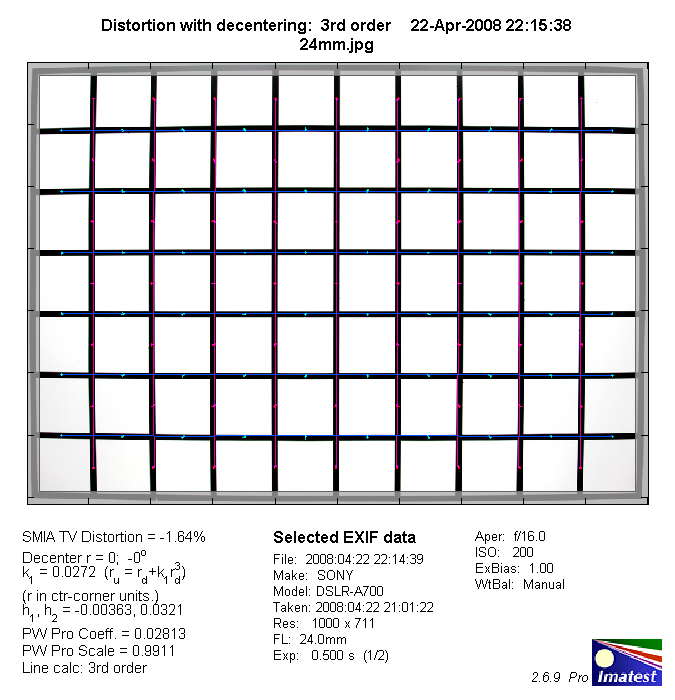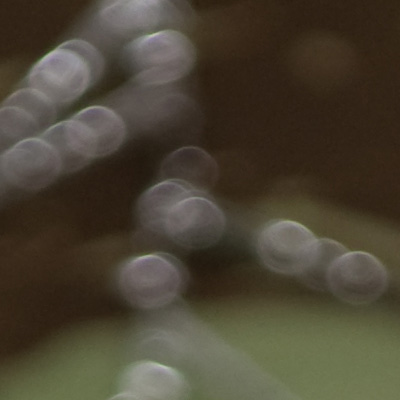|
Zeiss Vario-Sonnar T* 24-70mm f/2.8 ZA SSM (Sony SAL-2470Z) - APS-C Review / Test Report - Analysis |
|
Lens Reviews -
Sony Alpha/NEX (APS-C)
|
|
Page 2 of 3

Distortion
The Zeiss has a typical 3x zoom ratio and in combination with its full format character
it shows only a very moderate amount of distortion within the APS-C scope. Unsurprisingly
it is most pronounced at 24mm (1.6% barrel distortion) whereas the problem is
basically negligible at 40mm and 70mm.
|
Move the mouse cursor over the focal length text marks below to observe the respective distortion
|
| 24mm |
40mm |
70mm |

|
The chart above has a real-world size of about 120x80cm.
Vignetting
Thanks to the full format design the amount of vignetting is not field-relevant even at max. aperture.

MTF (resolution)
The Zeiss produced superb resolution figures in the MTF lab. The center
resolution resides at and sometimes probably even beyond the limits of the 12mp sensor
of the Alpha 700 at all tested apertures and throughout the zoom range.
The border resolution is only slightly worse at 24mm and it improves towards
40mm. At 70mm there's a more pronounced drop in border quality although
there's still no real reason to complain here ... technically that is. The bad news
is that both tested samples suffered from a more or less visible centering problem
at 70mm which had surely a certain influence here. Naturally 2 samples are not
statistically relevant to reveal a pattern here but this shouldn't happen in this price
league.
Field curvature is pretty much a non-issue with this lens - this is a significant problem
of its Nikon counterpart.
Please note that the MTF results are not directly comparable across the different systems!
Below is a simplified summary of the formal findings. The chart shows line widths per picture height (LW/PH) which can be taken as a measure for sharpness.
If you want to know more about the MTF50 figures you may check out the corresponding Imatest Explanations
Chromatic Aberrations (CAs)
Lateral chromatic aberrations (color shadows at harsh contrast transitions) are
generally quite well controlled. You may still be able to notice some CAs in field
images when using a wide-angle setting (~1.1px). The problem eases when zooming
towards the long end of the range.

Needless to say but you can correct or at least reduce lateral CAs during post-processing
e.g. via Photoshop.
Bokeh (out of focus blur)
The quality of the bokeh is not a strength of the Zeiss lens - at least not at 70mm but
this is surely the most interesting spot to look for. The out-of-focus hightlights show
a rather pronounced outlining effect and hard contrast edges can produce halos rather
than a soft fading. This is somewhat disappointing.
Here're some 100% sample crops illustrating the problem:



|